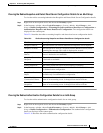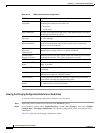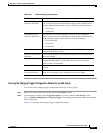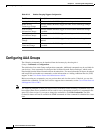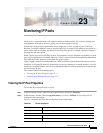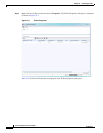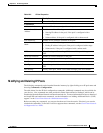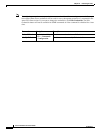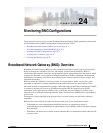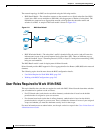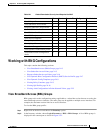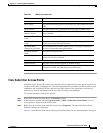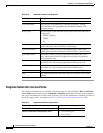
23-3
Cisco Prime Network 4.0 User Guide
OL-29343-01
Chapter 23 Monitoring IP Pools
Modifying and Deleting IP Pools
The following commands can be launched from the inventory by right-clicking on an IP pool name and
choosing Commands > Configuration.
The table below lists the IP Pool configuration commands. Additional commands may be available for
your devices. New commands are often provided in Prime Network Device Packages, which can be
downloaded from the Prime Network software download site. For more information on how to download
and install DPs and enable new commands, see the information on “Adding Additional Device (VNE)
support” in the Cisco Prime Network 4.0 Administrator Guide.
Before executing any commands, you can preview them and view the results. If desired, you can also
schedule the commands. To find out if a device supports these commands, see the Cisco Prime Network
4.0 Supported Cisco VNEs.
Table 23-2 IP Pool Properties
Field Name Description
Name Name of the IP pool.
IP Pool Entries
Addresses In Use Number of IP addresses assigned from the pool.
Start Address/Subnet
Address
Could be one of the following:
• Starting IP address in the pool, if the pool is configured with a
range.
• Subnet address, if the pool is configured with a subnet mask.
Free Addresses Number of free addresses available in the pool.
End Address/Subnet
Mask
Could be one of the following:
• Ending IP address in the pool, if the pool is configured with a range.
• Subnet mask, if the pool is configured with a subnet mask.
VRF Virtual Routing and Forwarding (VRF) name, if the pool belongs to a
VRF.
Reserved Addresses Number of reserved addresses in the pool.
Group Name Name of the group to which the pool belongs.
Pool Status Status of the pool.
Pool Type Type of the pool, which could be Public, Private, Static, Resource, or
NAT.
Pool Priority Priority of the pool, which is used when multiple pools are available.



